AI-driven innovation has leapt forward in just six months, much faster than in the past few years combined.
To help PS leaders keep up with what’s real, what’s next, and what’s working, we hosted a special session building on insights from Propel, our annual conference focused on the future of delivery. This conversation with Mary Poppen, President and Chief Customer Officer at Horizons and a longtime contributor to the Propel community, also marked the launch of our new Propel25 Ideabook: a curated resource built from 25+ sessions featuring expert perspectives and practical examples of AI, automation, and delivery transformation in action.
The session explored how forward-looking teams are embracing AI to drive efficiency, rethink delivery models, and modernize the customer journey.
Read on for takeaways from the session and ideas you can bring back to your own teams.
AI and intelligent automation: Rethink service delivery by moving from speed to strategy
Across every Propel conversation, a new mindset was clear. Teams are not just doing things faster, they’re doing them differently. PS teams are shifting from executing tasks to reimagining how outcomes are achieved.
Teams from MongoDB, AlayaCare, and others shared how they are rethinking the delivery playbook by changing the model entirely.
Here’s what that shift looks like in practice.
Reframe the timeline by reworking the approach
AI does more than speed up projects; it allows teams to take a different path to value. For instance, Benjamin Sandmann from MongoDB shared how they reduced app modernization timelines from 22–30 months to just four by using AI across planning, design, code translation, and testing. The key was using AI to translate tech stacks and reimagine process design.
The shorter timeline made it easier for customers to say yes. Most importantly, their PS team grew from 300 to 600 people to match demand.
Start with the outcome and let AI shape the path
Many teams begin by asking what tasks they can automate. A better starting point is to ask what outcome they want to achieve and let AI shape the process. Propel speakers saw the most impact when they stepped away from rigid playbooks and allowed AI to reshape the path.
In addition, teams are more effective when they are not weighed down by execution details. The goal is to let consultants operate at a more strategic level. Rocketlane’s own teams use the AI Fills feature to assist with configuration, documentation, and post-meeting follow-ups. This helps consultants focus on problem-solving and engagement, not just task execution. See how we at Rocketlane use Rocketlane for five workflows that power our delivery engine.
Use AI and historical data to improve delivery
Historical project data holds valuable insights. AI surfaces these patterns and applies them at the right time. It also helps tailor delivery to trends by industry or customer maturity.
For instance, the team at AlayaCare used AI to review where time and resources were getting wasted. They found consistent scope creep linked to weak discovery and redesigned their scoping process to auto-generate scope, speed up approvals, and reduce manual work.
Support your team through the shift, with empathy and intention
Automation changes how work gets done. That can create anxiety. Brian Hodges’s Propel session introduced the EASE framework for a smarter, more human way to run professional services with AI and automation.
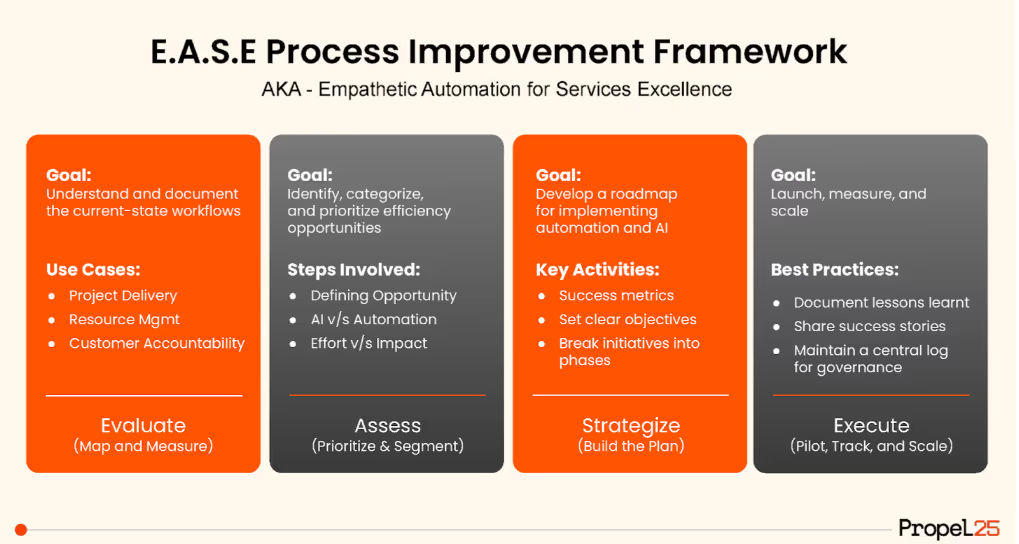
There was another key theme across the session: use AI to shift teams into more strategic work. That means training for new roles, preparing for advisory work, and recognizing that some roles may evolve.
Scaling with intent: Align growth, delivery, and operations
Scaling is not just about doing more. It’s about knowing what your company needs and adapting your delivery, operations, and team design to match that.
At Propel, leaders from AuditBoard, Logic, and Clutch shared how they’ve navigated this path. Their stories offer direction for teams looking to scale without losing focus.
Don’t model for scale too early
Early-stage companies often rush into process and optimization too soon. Justin Manduke from AuditBoard emphasized that a services team’s first job is to deliver well, even if inefficiently.
As the sales engine becomes more predictable and the ideal customer profile (ICP) is clear, focus naturally shifts to efficiency. But clarity matters. Teams need to know what they are optimizing for: experience or profitability. These goals don’t always align. Managing that tension is part of scaling with intent.
To get this right:
- Be explicit about what success looks like at your current stage—growth, margin, experience, or a combination
- Delay standardization until delivery is stable and learnings are repeatable
- Keep your board, leadership, and frontline teams aligned on trade-offs
Rethink who does the work when resources are limited
As services teams grow, many are asked to scale without increasing headcount. This means rethinking how work is distributed.
Gian Luis Delgado from LogicGate shared their experience of hiring with intent. Should you hire consultants or technical specialists? The answer depends on your process maturity and customer expectations.
Another idea shared: making team members interchangeable across projects. This works when expectations are set early and communication is clear. Customers care more about consistency than about who delivers.
To scale without burning out your team:
- Define roles by function and strength, not by project ownership
- Build room for internal handoffs into the delivery model
- Let technical execution happen behind the scenes so consultants can focus on high-impact work
Sequence delivery models to match growth
Scaling is as much about alignment as it is about growth. Strong teams scale by focusing on what matters now, not just repeating what worked before.
Daniel Levine from Clutch shared a simple framework: taxis, buses, then subways. In the taxi phase, teams adapt on the fly. Then they shift to structured “bus routes.” Eventually, they move to “subways”—fixed systems with little variation.
Trying to scale too early forces teams into subway mode without foundational learning. Staying in taxi mode for too long creates inefficiency. The key is to move deliberately through each phase.
When building for scale:
- Let early teams experiment and document what works
- Turn repeatable patterns into playbooks
- Automate only after patterns are proven and stable
Growth and innovation: Productize and evolve the delivery model
Productize the full delivery experience, not just what you offer
Mark Sloan’s session on ‘services as a product’ pushed teams to treat delivery itself as a product. That means systematizing how you deliver, from kickoff to closure.
To build a productized delivery model:
- Write and maintain delivery playbooks with documentation, email templates, meeting formats, etc.
- Train teams on how and when to use them.
- Package offerings so sales can proactively pitch them.
Design use-case-driven services to improve alignment
Customer use cases should shape how you sell, deliver, and evolve. At Rocketlane, a customer outcome map helps align teams on what matters and when to intervene.
To create use-case alignment:
- Identify top customer use cases and link them to services
- Train pre- and post-sales teams to act on them
- Use a shared outcomes framework across the lifecycle
Delay partner expansion until your internal model works at scale
You need to prove that your model delivers consistent value before enabling partners. Partner success depends on governance, support, and repeatability.
To effectively start and scale through partner implementations
- Share tested playbooks, not generic documentation
- Provide a support model that partners can rely on
- Track CSAT, delivery timelines, and quality, not just certifications
- Plan for quarterly re-enablement aligned to product updates
Embed continuous success planning after go-live
Kasey Smith, Head of Ops, CX & Integrations at Graphite Connect, shared how they implement continuous engagement to co-own a shared post-go-live success plan with customers. Each quarter brings visible priorities and clear ownership.
To build this model:
- Maintain a success tracker with quarterly activities and owners
- Provide visibility into past and upcoming work
- Establish a structured cadence for planning and reflection
The future of professional services is here
The future of professional services is being shaped by AI, bold experimentation, and smarter delivery models. There’s a lot to be inspired by.
Want to see how the best are doing it?
You can watch all Propel25 sessions or explore our professional services Ideabook, a curated collection of insights from 25+ sessions at Propel25.
Curious how Rocketlane can power the future at your org?
Book a demo to see it in action.
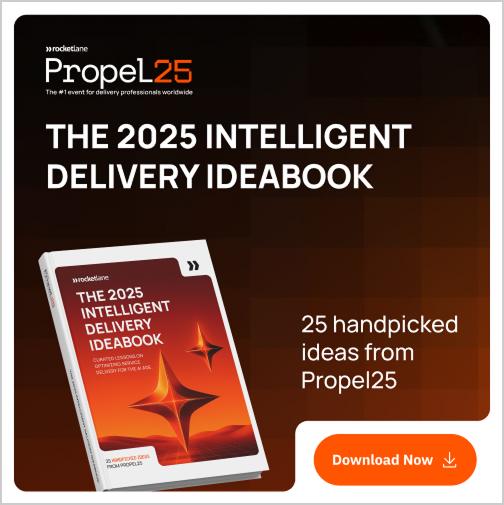

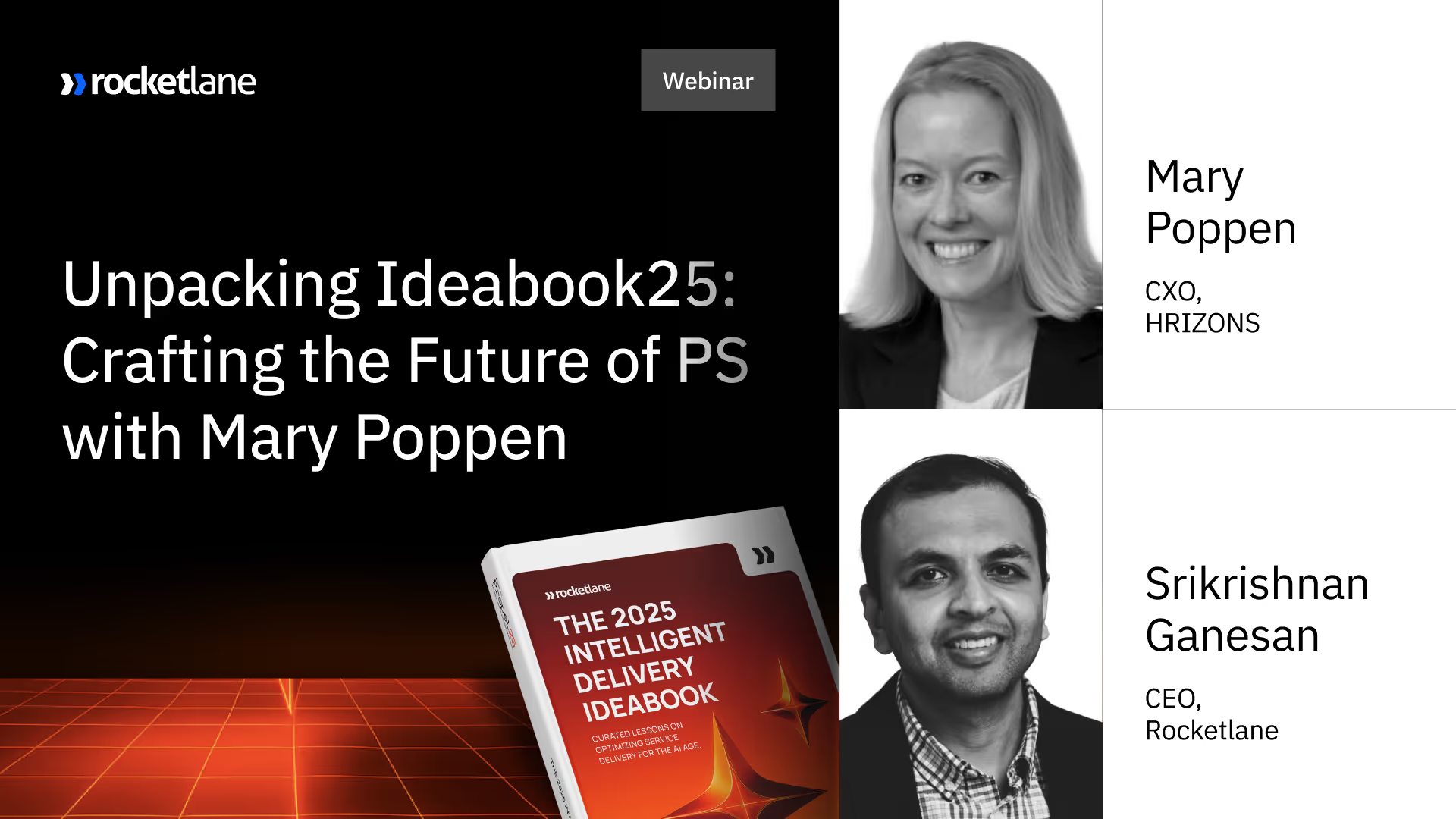

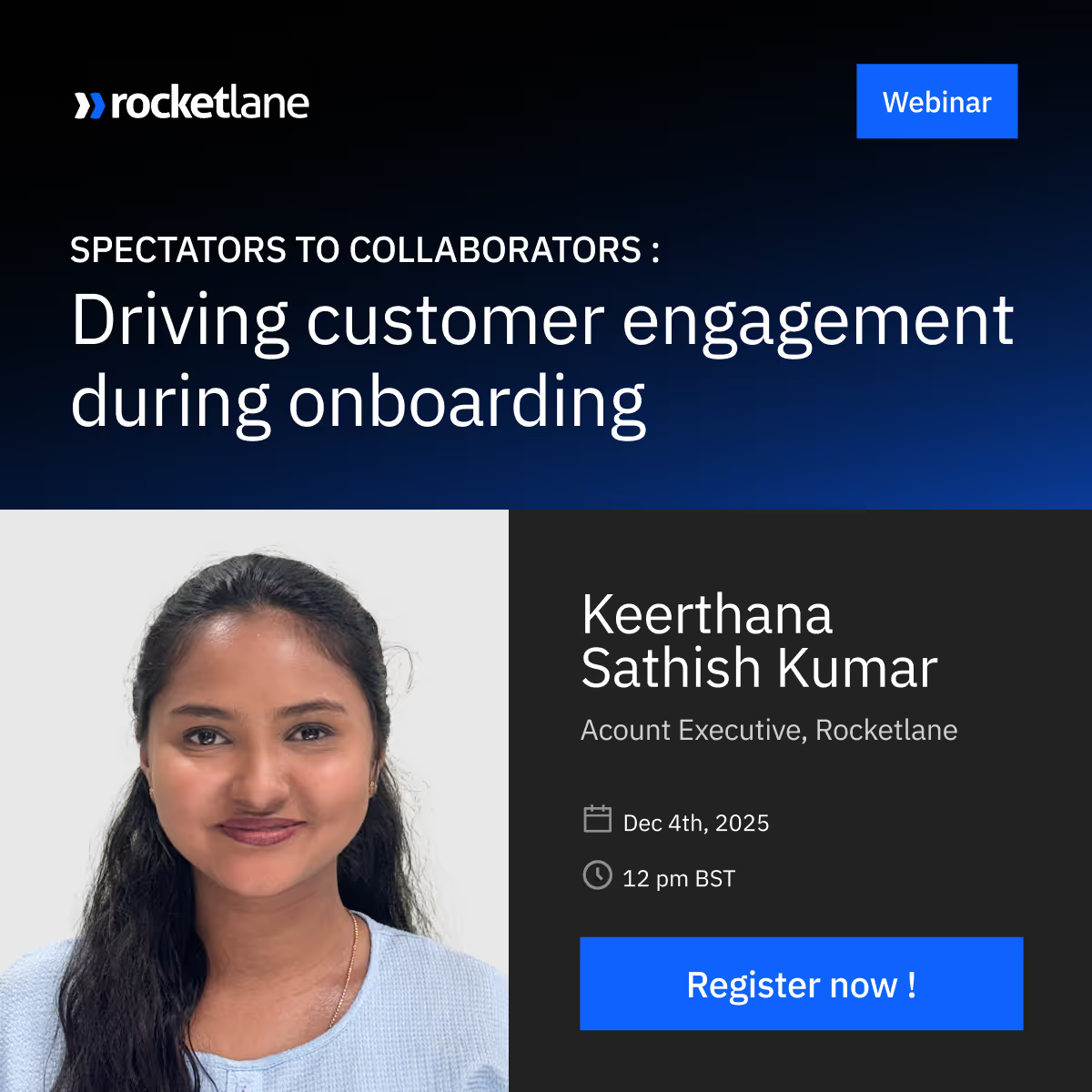


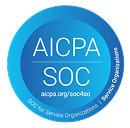
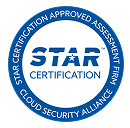

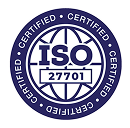









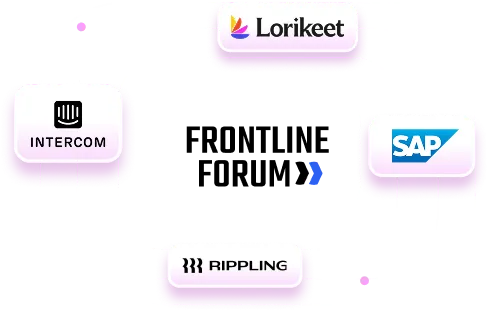



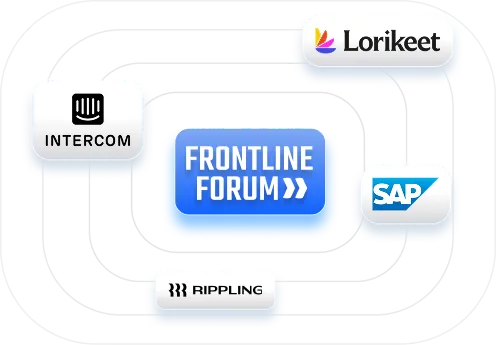
.webp)